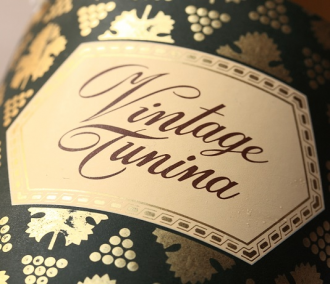His first 40 years

It is not very original to say that time flies and when 40 years go by and they seem like much less then it means you’re getting old. And the older you get each year seems shorter and time seems to be flying by even faster.
These dark thoughts came to me when I found out that the 2015 Vintage Tunina from Silvio Jermann marked the end of the wine’s fourth decade. Silvio came out with his first vintage in 1975, when I was just 21 and I must admit it has aged much better than I have. He had studied at the San Michele all’Adige, in Trentino, and his father Angelo let him use some space in his winery where Silvio immediately invented a wine that to describe as innovative would be a gross understatement. It was an authentic technical revolution.
What Silvio wanted to do was restore the tradition of blending wine that had been at the heart of Friuli winemaking. Blending Tocai (Friulano), Ribollah Gialla and Malvasia Istriana, in fact, had been the common practice until the several years earlier when leading winemakers including Mario Schiopetto, Livio Felluga and Vittorio Puiatti switched to producing single-grape varietal wines.
Another factor in his decision was the vineyard he had behind his home on Monte Fortino, which is in the heart of Collio and looks like an island surrounded by the Isonzo plain, in Villanova di Farra, not far from Gradisca. It was a beautiful vineyard with a vast variety of grapes including Pinot Bianco that turned out to be Chardonnay, Sauvignon, Rhine Riesling, Ribolla Gialla, Malvasia Istriana and even some Picolit somehow found it way there. The idea of blending inspired him to harvest and press all the grapes together. He also allowed the wine to undergo malolactic fermentation, which at the time was nothing short of heresy, and then let the wine age in stainless steel vats to see what would happen.
While the wine aged, he and his wife at the time, Anna, came up with a name for the new wine. Because the wine was as soft and fragrant as a lover, they chose the name of Casanova’s poorest lover, Tunina. Since she was a beautiful peasant girl, it was fitting that this very beautiful, feminine and ‘peasant’ wine have her name.
Silvio only made a few thousand bottles from the 1975 harvest, which was not unusual given that it was an experiment. But word got around about his wine and Gino Veronelli, who had a widely read column in Panorama magazine, dedicated a full article to Tunina and entitled it “The Mennea of Wines”, a reference to sprinter Pietro Mennea given that it left all the other wines far behind. Then all hell broke loose with the big producers writing in that it was an insult to say such good things about a white wine that had aged only one year, was produced in only a few thousand bottles and was made by a practically unknown young winemaker.
It took a while to sell the wine and get it known and there was also a falling out between Silvio and his father that led to Silvio going to Canada for a couple of years. This meant that there was no vintage Tunina in 1976 and 1977 but this was no great loss because they were poor years to begin with. When he came back be got to work on vintage 1978 with a few changes, putting into practice the experience he had gained in Canada. Since then Tunina has become a cult wine, much more of it is produced today and it is known worldwide, to the extent of being a legend in the United States.
And it is still as soft and fragrant has Casanova’s young peasant lover.
|

 Italiano
Italiano







